Formulating a content marketing strategy isn’t a straightforward task. It’s simply not a case of starting a blog and throwing up hundreds of articles on your website and expecting they’ll gain excellent traction with an audience.
Of course, understanding that content marketing is the right first step is vital, but before you begin any content marketing strategy, you should be aware of a few things first.
Firstly: no matter how unique your content is, if you’re not telling people about it by marketing, sharing, and promoting it – there will be nobody around to read it.
In this blog post, you’ll learn about ten simple to action content marketing tips that any creative marketing pro should have in their arsenal.
#1: Make Sure Your Audience Can Use Your Content
When people are looking for articles, incredibly informative ones, they don’t want fluff or theory. They want actionable advice and tips so they can begin to formulate their plans.
Whether you do this by including an “action conclusion” at the end of each of your articles or writing in a style that feeds actionable information throughout the article, it’s entirely your choice. Either way, though, however, you’re presenting the story; it must be in a way that is both easy to read and simple to translate into a reader’s day-to-day life.
The inbound method suggests a process that follows these steps:
- Produce value and heal pain points – Any actionable article must offer something valuable and fix any problems someone might have in their daily lives.
- Forge relationships – Now you’ve enticed someone with what your content can offer them, you need to begin to build on these foundations.
- Earn trust – Any good article must earn the reader’s trust by providing a useful piece of content backed by figures, plenty of visual cues, and solid research.
#2: Using Headlines to Grab Attention
Which headline are you more likely to click:
- How To Hit 1,000,000 Visitors in a Year of Blogging
Or
- How to Increase Blog Visitors
There is no competition, is there?
It doesn’t matter whether you’re creating videos, blog posts, podcasts, or any other form of content. The attention-grabber, AKA, the headline, is one of the most crucial aspects of whether this content will entice your audience or fall flat.
By making your headlines enticing, your conversions will increase exponentially; in other words, the more folks visiting your site, the bigger your business will become.
Even a blog post about on a topic like motivation, which has been covered widely, can be different and exciting when pitched correctly:

Image from ChrisBroganMedia
You don’t need to be a first-rate Hemingway type to craft a fantastic headline. Instead, it would help if you were super-focused on what it is your readers. You are looking for and deliver that.
#3: Monetising Your Content
Great content on your website is one thing, but that one thing in itself should be serving the purpose of making you more sales. If your content isn’t doing that, it may look great, but it isn’t much more than a waste of your time.
You could produce millions and millions of words without ever really connecting to a core message that delivers on your business’s goals and converts more customers. The sad truth is: if your content isn’t driving conversion, it’s useless.
You may now be wondering what on earth you’re going to do with all those long-form blog posts you’ve created?
The answer is simple: calls to action. It is the only way to push sales in your content without being overly sales-driven.
Calls to action are often something that marketers might be worried about overdoing, but so long as you’re not pushy or over-the-top – as in this example below from Evernote – you can turn your entire content marketing strategy on its head.
Take a look at this example from Evernote:
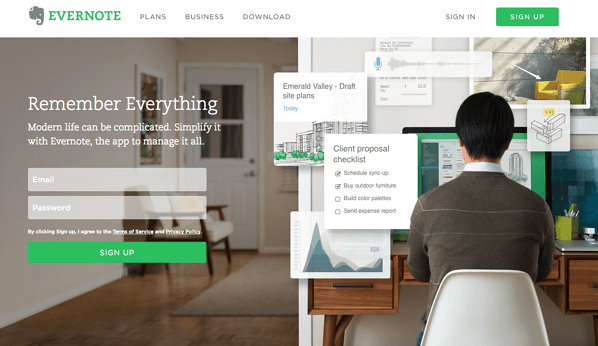
Image from HubSpot
You can clearly see that they’re looking for people to sign up; it’s bright, attractively designed, and the page clearly explains what it is they’d like their customer to do.
To transform your conversionless content, use calls to action, run A/B tests on your designs and color palettes, and invite your users to make that next step to becoming customers.
#4: Always Include Visual Media
They say a picture is worth a thousand words.
So, it begs the question, what is a 2,000-word article with five images worth?
While that’s an open question, throughout your content marketing strategy, you must realize that we humans are far more adept at processing images than words, as per Business2Community. In fact, according to the infographic below by RedEyeProductions, the human brain processes visual images 60,000x times faster than text.
If you’re looking to increase users’ volume that responds and share your content across social, adding visual media, like pictures and videos, is vital.
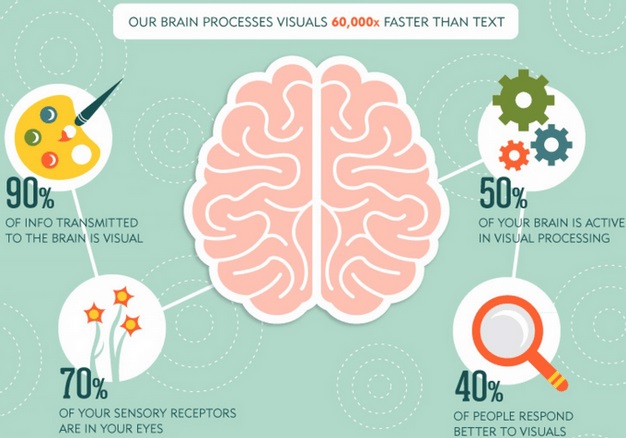
Image from RedEyeProductions
Try to add as many relevant images and videos into your posts as is physically possible.
Sure, it can be a pain when the time comes to upload your content, but if you have faced the prospect of trying to make a dent in a 3,000-word article with no images or visual media, would you be that excited about reading it?
#5: Don’t Always Go in for the Kill
Ever feel like all you’re doing is peddling products when you’re creating your content? If so, it’s something you need to be mindful about.
Think about it from a potential consumer standpoint, who would you instead buy from:
- The company sells the product you want but can back it up with quality content that helps you solve problems and relieve pain points (more on this later).
Or
- The company that continually bombards you with “buy nows” and product plugs.
The answer is obvious; the latter is distracting and really does take the user’s thoughts, feelings, and needs out of the equation entirely.
Content marketing is about building relationships, creating a connection with an audience, and establishing yourself as a reputable source in your niche.
It would help if you always looked at your content marketing strategy as an opportunity to create excellent content that is truly useful to your readers in the long-term. That way, you’ll be in a great position to make more sales down the road.
When creating your content marketing, always consider:
- Placing focus on education rather than selling. Educating an audience will help solve their problems; sales are a natural side effect.
- Don’t always talk up your business or bombard users with a barrage of intrusive CTAs.
- Focus your energy on building relationships based on trust before asking your audience to buy from you.
#6: Create an Emotional Connection
As much as we like to claim we are both rational and logical, our emotions rule all of us to some extent. It is why you should focus on creating content that packs a punch in the emotional stakes; if you can do that, then you’re guaranteed to create content that has a significant impact.
But, the question is: how can you appeal to the emotions of your audience?
As a starting point, you must first understand which emotions are going to produce the best results:
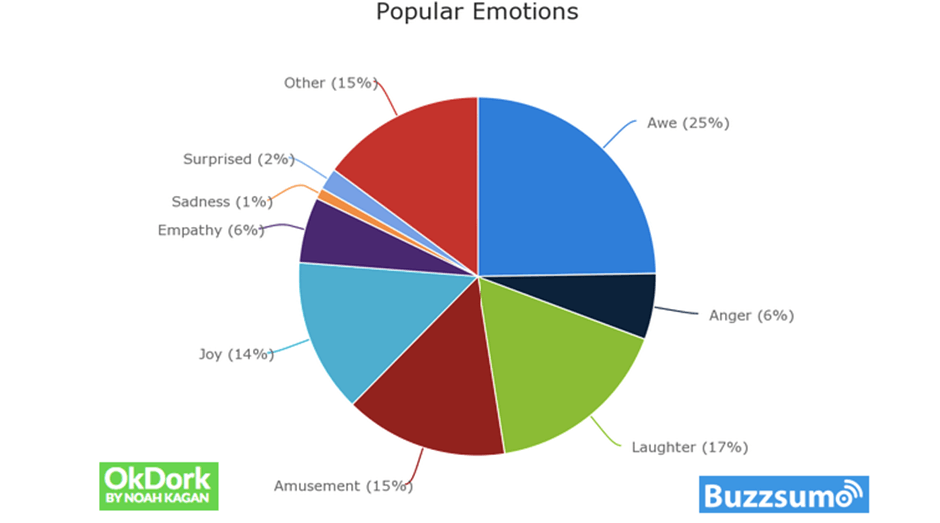
According to this collaborative research piece by OkDork and BuzzSumo, your best shot at creating emotionally driven content is to write in a way that inspires:
- Awe
- Laughter
- Amusement
- Joy
#7: Use Images That Include People’s Face
This one is undoubtedly one of those content marketing tips that are often overlooked. Still, when you think about it, you might notice that some of the most successful content out there features tonnes of images with people’s faces in them.
Here are a few examples:

Image from Buffer
I also use a picture of myself on my website capiston.com:
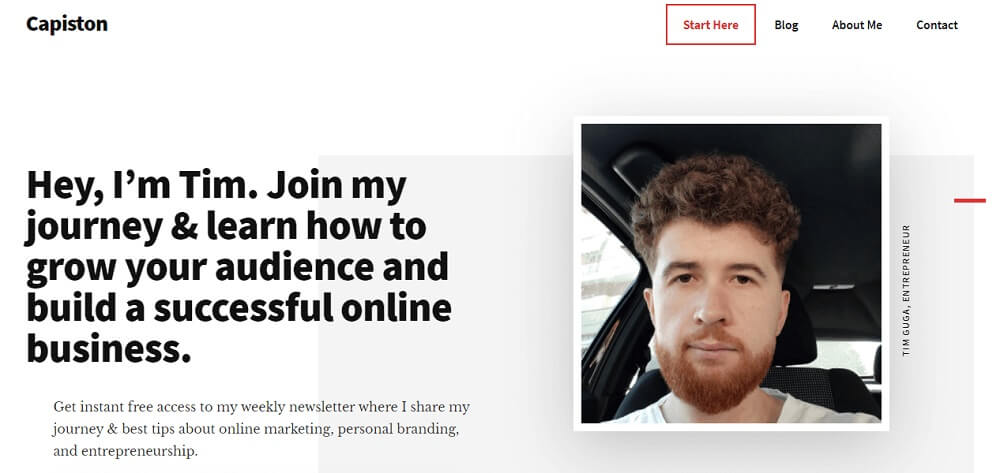
But why is this important?
For instance, let’s say that you’re at a party and you’re trying to talk to someone from a foreign country who speaks an entirely different language from your own. You’ll realize soon enough that verbal communication is likely to be a waste of time.
However, almost everyone can understand facial cues. It is how babies learn to make sense of the world before they can use language to communicate.
The point here is that the human brain is pretty gifted at processing facial signals, so images of human faces are ideal for conveying trust and the right emotions.
#8: Using Colours in the Right Way
Using the right color palettes is another fantastic content marketing hack to help create specific thoughts and feelings amongst your audience.
Every color has some meaning behind it, and by using the right colors in your content that match the emotions you’re trying to put across, it can help the reader further understand the context of your piece.
For example, take a look at this color palette from Visme:
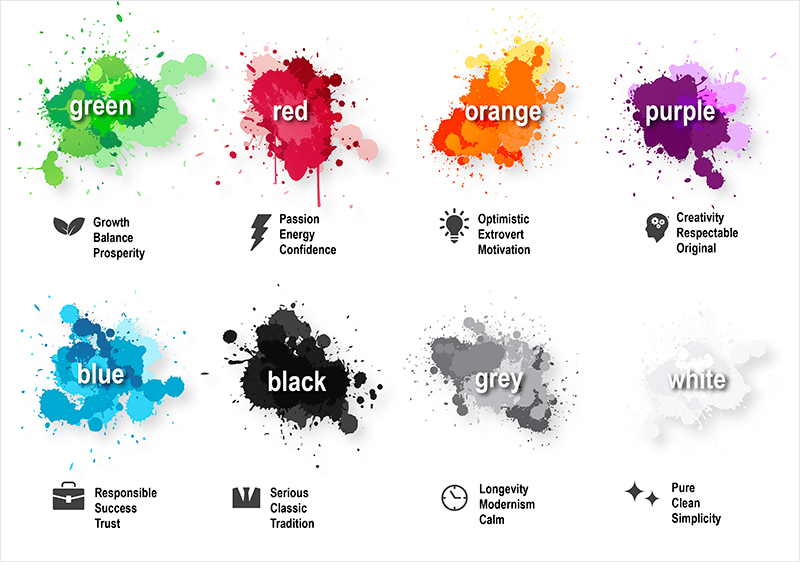
The key here is to do your research and try to identify the best color for what you’re talking about. For example, if you’re writing a blog post about Valentine’s Day, you might look to incorporate images and colors that heavily feature red.
Color psychology is a major scientific field, so it’s certainly worth looking further into helping your marketing campaigns.
#9: Solve Problems
Conventional marketing advice suggests that showcasing your product or service’s benefits to show how it can improve your customer’s life is the best approach to marketing your wares. By outlining the positive aspects that your product or service will bring, you’re tapping into the pleasure-seeking portion of the human brain.
However, science tells us that this isn’t necessarily the road in which you should travel. This blog post on OOm.com explains that the brain’s pain avoidance response is almost three times more potent than the pleasure-seeking response.
The point here is, you’re probably more likely to connect with a potential customer if you’re offering them a solution to their problems and pain points than you are by merely telling them how good your product or service is.
#10: Keep it Simple
Does your content rely on a stream of nonsensical jargon and obnoxious buzz words?
If so, there’s no doubt at all that you’re sending some of your users back the way they came, with the genuine possibility that they won’t be coming back.
Please make no mistake, though, you need to come across as smart, knowledgeable, and intuitive, but there’s a fine line between engaging your audience and ultimately turning them off.
It can be especially problematic in specific sectors such as legal, medical, and finance, where complicated subjects are discussed as a matter of course.
If you’re not careful, you could quickly lose the attention of your audience, or worse, make them feel wholly alienated and foolish.
To sidestep this, keep your tone natural and conversational. Imagine you’re sitting across from someone and having a conversation – this visualization can do wonders.
When proofreading your work, ask yourself the following:
- Will the average reader understand what I’m writing about?
- Am I writing in my unique voice?
- Is there anything I can simplify?
- Is there any jargon that I could do away with?
Takeaways
There’s no doubt at all that content marketing can be overwhelming. There are countless channels to market your content, and sometimes, this choice in itself can make things difficult.
Just take a breath and relax; the most critical aspect of content marketing is creating great content and sharing it, where it makes the most sense. Once you’re off to a good start with the basics, you can experiment with the more advanced stuff.
By putting these content marketing tips into practice, you have the chance to make your content more potent and generate more back for your buck in the process.







1 Comment